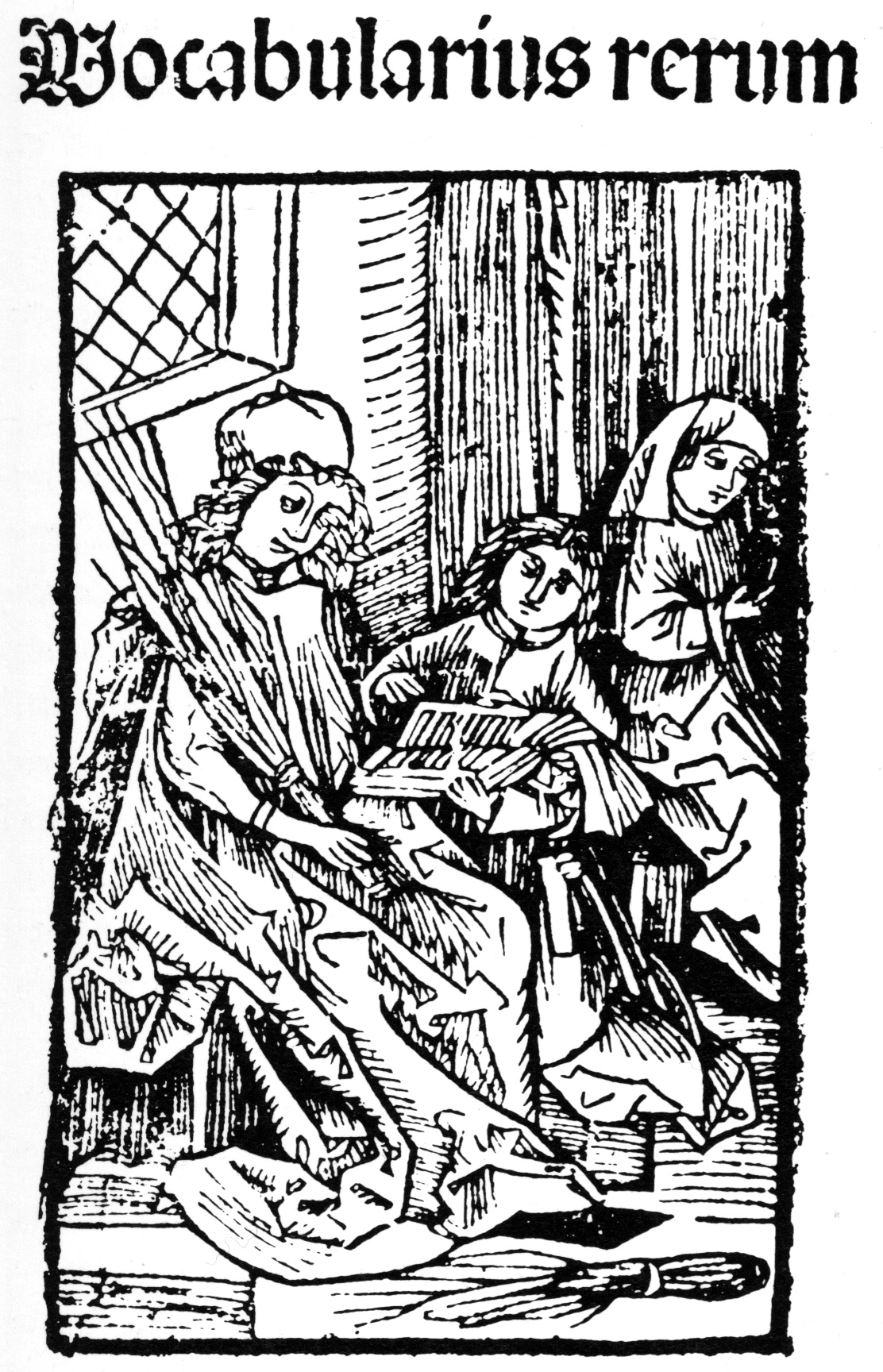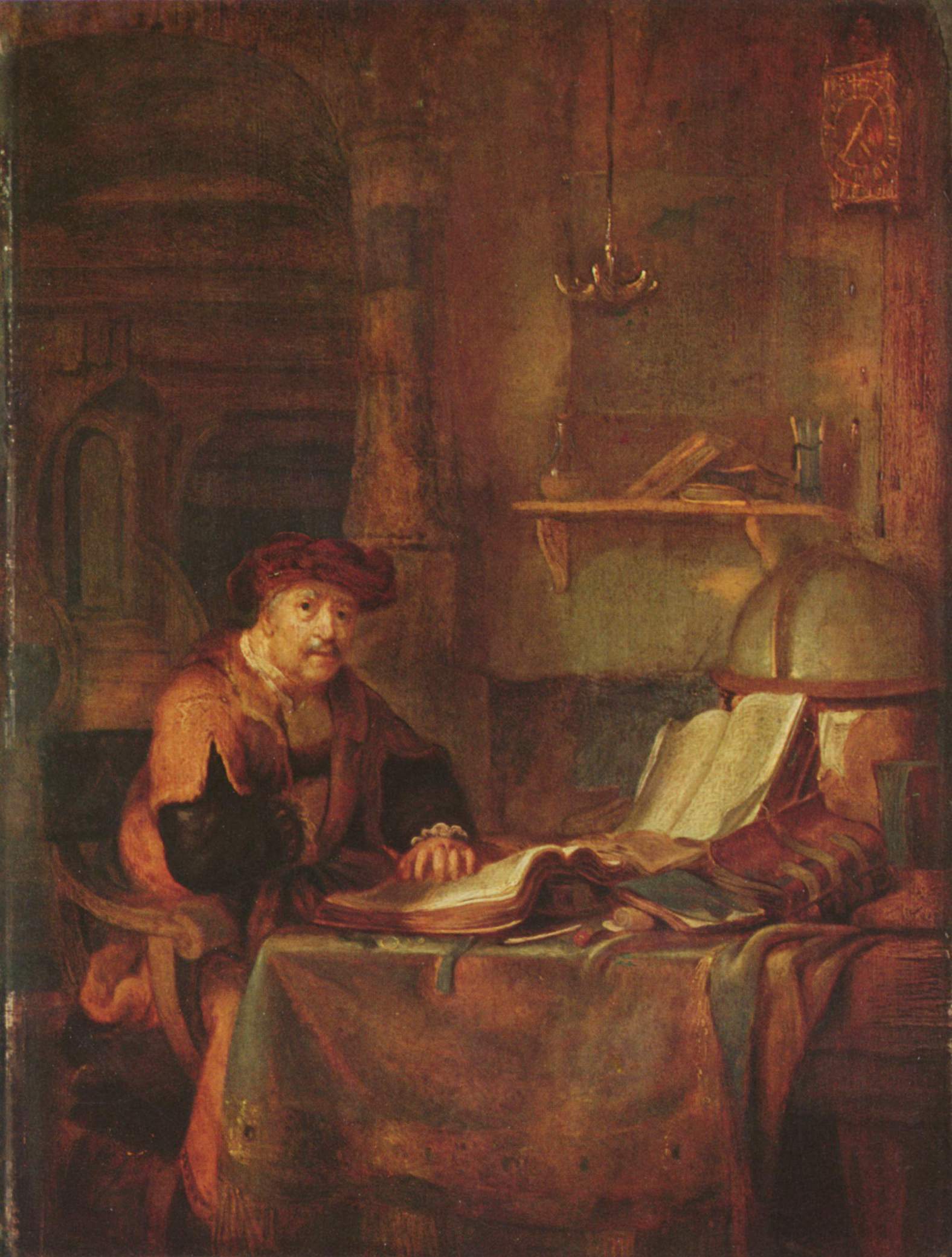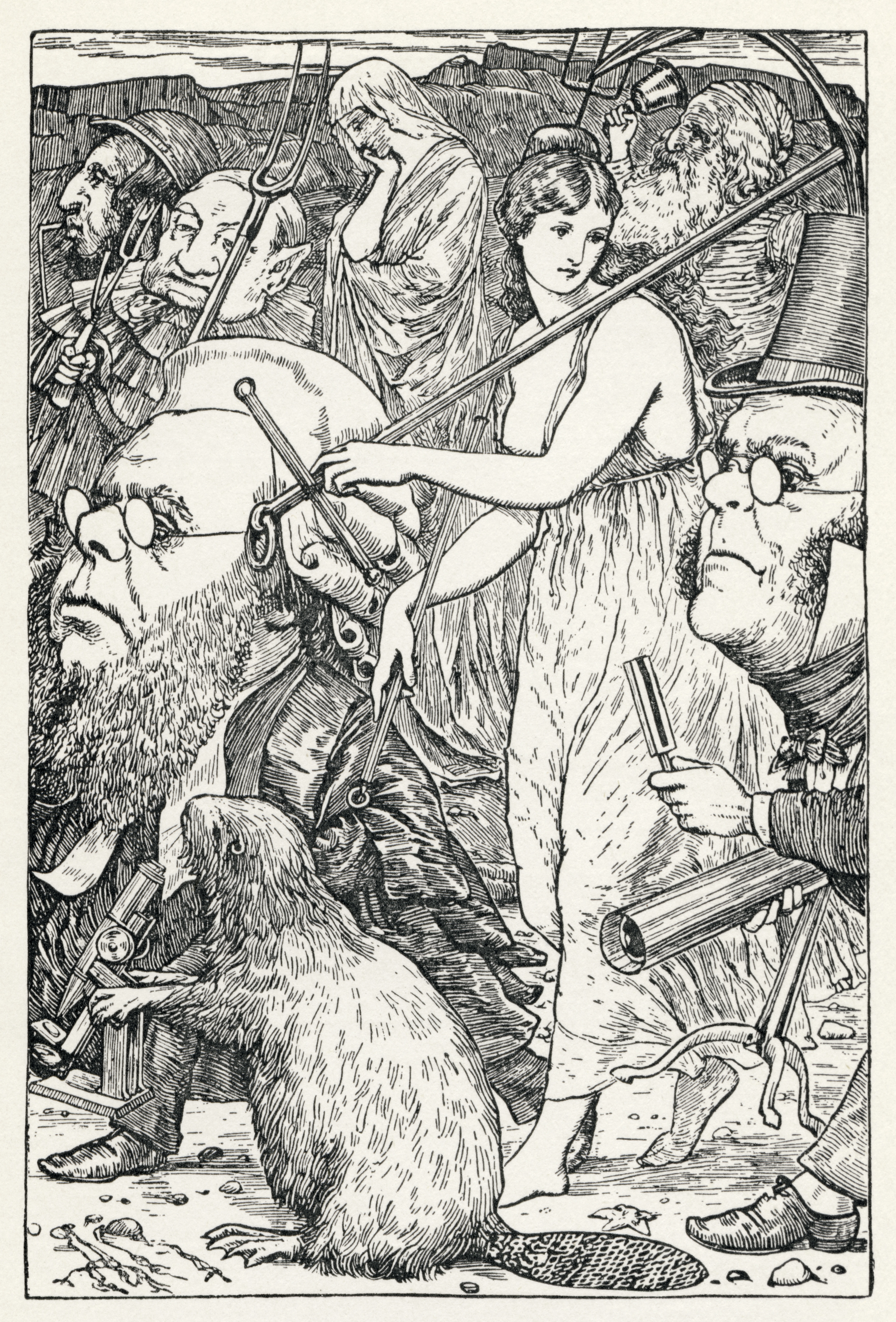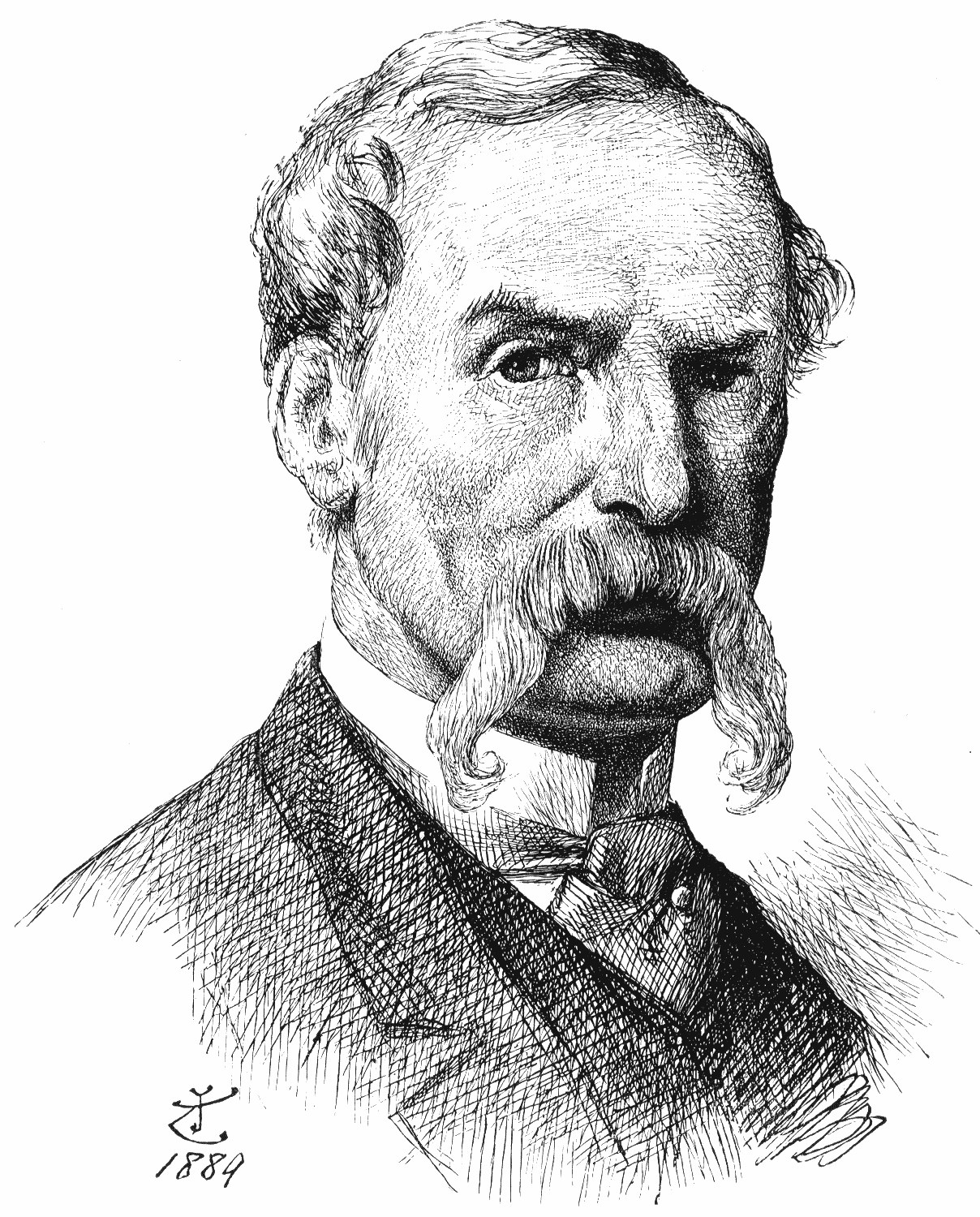|
Lewis Carroll
Charles Lutwidge Dodgson (27 January 1832 – 14 January 1898), better known by his pen name Lewis Carroll, was an English author, poet, mathematician, photographer and reluctant Anglicanism, Anglican deacon. His most notable works are ''Alice's Adventures in Wonderland'' (1865) and its sequel ''Through the Looking-Glass'' (1871). He was noted for his facility with word play, logic, and fantasy. His poems ''Jabberwocky'' (1871) and ''The Hunting of the Snark'' (1876) are classified in the genre of literary nonsense. Some of Alice's nonsensical wonderland logic reflects his published work on mathematical logic. Carroll came from a family of high-church Anglicanism, Anglicans, and pursued his clerical training at Christ Church, Oxford, where he lived for most of his life as a scholar, teacher and (necessarily for his academic fellowship at the time) Anglican deacon. Alice Liddell – a daughter of Henry Liddell, the Dean of Christ Church, Oxford, Dean of Christ Church – is wide ... [...More Info...] [...Related Items...] OR: [Wikipedia] [Google] [Baidu] |
Daresbury
Daresbury is a village and civil parish in the Borough of Halton, Cheshire, England. At the 2011 census, it had a population of 246. History The name means "Deor's fortification", derived from an Old English personal name and the word ''burh'' (a fortified place). The population was recorded over time at 134 in the census of 1801, 157 in 1851, 153 in 1901, 235 in 1951 and reaching 216 by 2001. Opened in 1850 on the Birkenhead Railway, the area was served by Daresbury railway station in the nearby village of Moore. The station closed to passengers in 1952 and to goods in 1965, although the line through the station site remains in use. Daresbury was the birthplace of ''Alice's Adventures in Wonderland'' author Lewis Carroll, in All Saints' Vicarage. The village has a Lewis Carroll Visitor Centre and in the parish church of All Saints, a Lewis Carroll window, which includes an image of the Cheshire Cat. Landmarks Built in 1759, Daresbury Hall is a former Georgian country ... [...More Info...] [...Related Items...] OR: [Wikipedia] [Google] [Baidu] |
Author
In legal discourse, an author is the creator of an original work that has been published, whether that work exists in written, graphic, visual, or recorded form. The act of creating such a work is referred to as authorship. Therefore, a sculptor, painter, or composer is considered the author of their respective sculptures, paintings, or musical compositions. Although in common usage, the term "author" is often associated specifically with the writer of a book, Article (publishing), article, Play (theatre), play, or other written work. In cases involving a work for hire, the employer or commissioning party is legally considered the author of the work, even if it was created by someone else. Typically, the first owner of a copyright is the creator of the copyrighted work, i.e., the author. If more than one person created the work, then joint authorship has taken place. Copyright laws differ around the world. The United States Copyright Office, for example, defines copyright as "a ... [...More Info...] [...Related Items...] OR: [Wikipedia] [Google] [Baidu] |
Teacher
A teacher, also called a schoolteacher or formally an educator, is a person who helps students to acquire knowledge, competence, or virtue, via the practice of teaching. ''Informally'' the role of teacher may be taken on by anyone (e.g. when showing a colleague how to perform a specific task). In some countries, teaching young people of school age may be carried out in an informal setting, such as within the family (homeschooling), rather than in a formal setting such as a school or college. Some other professions may involve a significant amount of teaching (e.g. youth worker, pastor). In most countries, ''formal'' teaching of students is usually carried out by paid professional teachers. This article focuses on those who are ''employed'', as their main role, to teach others in a ''formal'' education context, such as at a school or other place of ''initial'' formal education or training. Duties and functions A teacher's role may vary among cultures. Teachers may provi ... [...More Info...] [...Related Items...] OR: [Wikipedia] [Google] [Baidu] |
Scholar
A scholar is a person who is a researcher or has expertise in an academic discipline. A scholar can also be an academic, who works as a professor, teacher, or researcher at a university. An academic usually holds an advanced degree or a terminal degree, such as a master's degree or a doctorate (PhD). Independent scholars and public intellectuals work outside the academy yet may publish in academic journals and participate in scholarly public discussion. Definitions In contemporary English usage, the term ''scholar'' sometimes is equivalent to the term ''academic'', and describes a university-educated individual who has achieved intellectual mastery of an academic discipline, as instructor and as researcher. Moreover, before the establishment of universities, the term ''scholar'' identified and described an intellectual person whose primary occupation was professional research. In 1847, minister Emanuel Vogel Gerhart spoke of the role of the scholar in society: Gerhart argued ... [...More Info...] [...Related Items...] OR: [Wikipedia] [Google] [Baidu] |
High-church
A ''high church'' is a Christian Church whose beliefs and practices of Christian ecclesiology, liturgy, and theology emphasize "ritual, priestly authority, nd sacraments," and a standard liturgy. Although used in connection with various Christian traditions such as ''high church'' Lutheranism, the English term ''high church'' originated in the Anglican tradition, where it described a churchmanship in which a number of ritual practices associated in the popular mind with Roman Catholicism were used, or as a description of such practices in the Catholic Church and elsewhere. The opposite tradition is '' low church''. Contemporary media discussing Anglican churches often prefer the terms evangelical to ''low church'' and Anglo-Catholic to ''high church'', even though their meanings do not exactly correspond. Other Christian denominations that contain ''high church'' wings include some Presbyterian and Methodist churches. These High-Church Protestants tend to adopt more liturgica ... [...More Info...] [...Related Items...] OR: [Wikipedia] [Google] [Baidu] |
The Hunting Of The Snark
''The Hunting of the Snark'', subtitled ''An Agony, in Eight Fits'', is a poem by the English writer Lewis Carroll. It is typically categorised as a nonsense poem. Written between 1874 and 1876, it borrows the setting, some creatures, and eight portmanteau words from Carroll's earlier poem "Jabberwocky" in his children's novel ''Through the Looking-Glass'' (1871). Macmillan published ''The Hunting of the Snark'' in the United Kingdom at the end of March 1876, with nine illustrations by Henry Holiday. It had mixed reviews from reviewers, who found it strange. The first printing of the poem consisted of 10,000 copies. There were two reprints by the conclusion of the year; in total, the poem was reprinted 17 times between 1876 and 1908. The poem also has been adapted for musicals, movies, opera, plays, and music. The narrative follows a crew of ten trying to hunt the Snark, a creature which may turn out to be a highly dangerous ''Boojum''. The only crew member to find the Snar ... [...More Info...] [...Related Items...] OR: [Wikipedia] [Google] [Baidu] |
Jabberwocky
"Jabberwocky" is a Nonsense verse, nonsense poem written by Lewis Carroll about the killing of a creature named "the Jabberwock". It was included in his 1871 novel ''Through the Looking-Glass'', the sequel to ''Alice's Adventures in Wonderland'' (1865). The book tells of Alice's adventures within the Parallel universes in fiction, back-to-front world of the Looking-Glass world. In an early scene in which she first encounters the chess piece characters White King (Through the Looking-Glass), White King and White Queen (Through the Looking-Glass), White Queen, Alice finds a book written in a seemingly unintelligible language. Realising that she is travelling through an inverted world, she recognises that the verses on the pages are written in mirror writing. She holds a mirror to one of the poems and reads the reflected verse of "Jabberwocky". She finds the nonsense verse as puzzling as the odd land she has passed into, later revealed as a dreamscape. "Jabberwocky" is considered ... [...More Info...] [...Related Items...] OR: [Wikipedia] [Google] [Baidu] |
Word Play
Word play or wordplay (also: play-on-words) is a literary technique and a form of wit in which words used become the main subject of the work, primarily for the purpose of intended effect or amusement. Examples of word play include puns, phonetic mix-ups such as spoonerisms, obscure words and meanings, clever rhetorical excursions, oddly formed sentences, double entendres, and telling character names (such as in the play '' The Importance of Being Earnest'', ''Ernest'' being a given name that sounds exactly like the adjective ''earnest''). Word play is quite common in oral cultures as a method of reinforcing meaning. Examples of text-based ( orthographic) word play are found in languages with or without alphabet-based scripts, such as homophonic puns in Mandarin Chinese. Techniques ; Tom Swifties: A form of humorous writing where adverbs are chosen to reflect the nature of the situation in a punning way. "Hurry up and get to the back of the ship", Tom said sternly. ... [...More Info...] [...Related Items...] OR: [Wikipedia] [Google] [Baidu] |
Through The Looking-Glass
''Through the Looking-Glass, and What Alice Found There'' is a novel published in December 1871 by Lewis Carroll, the pen name of Charles Lutwidge Dodgson, a mathematics lecturer at Christ Church, Oxford, Christ Church, University of Oxford. It was the sequel to his ''Alice's Adventures in Wonderland'' (1865), in which many of the characters were anthropomorphic Playing card, playing-cards. In this second novel the theme is chess. As in the earlier book, the central figure, Alice (Alice's Adventures in Wonderland), Alice, enters a fantastical world, this time by climbing through a large looking-glass (a mirror) into a world that she can see beyond it. There she finds that, just as in a reflection, things are reversed, including logic (for example, running helps one remain stationary, walking away from something brings one towards it, chessmen are alive and nursery-rhyme characters are real). Among the characters Alice meets are the severe Red Queen (Through the Looking-Glass), ... [...More Info...] [...Related Items...] OR: [Wikipedia] [Google] [Baidu] |
Alice's Adventures In Wonderland
''Alice's Adventures in Wonderland'' (also known as ''Alice in Wonderland'') is an 1865 English Children's literature, children's novel by Lewis Carroll, a mathematics university don, don at the University of Oxford. It details the story of a girl named Alice (Alice's Adventures in Wonderland), Alice who falls through a rabbit hole into a fantasy world of anthropomorphism, anthropomorphic creatures. It is seen as an example of the literary nonsense genre. The artist John Tenniel provided 42 wood-engraved illustrations for the book. It received positive reviews upon release and is now one of the best-known works of Victorian literature; its narrative, structure, characters and imagery have had a widespread influence on popular culture and literature, especially in the fantasy genre. It is credited as helping end an era of didacticism in children's literature, inaugurating an era in which writing for children aimed to "delight or entertain". The tale plays with logic, giving th ... [...More Info...] [...Related Items...] OR: [Wikipedia] [Google] [Baidu] |
Deacon
A deacon is a member of the diaconate, an office in Christian churches that is generally associated with service of some kind, but which varies among theological and denominational traditions. Major Christian denominations, such as the Catholic Church, the Oriental Orthodox Churches, the Eastern Orthodox Church, Lutheranism, Presbyterianism, Methodism, and Anglicanism, view the diaconate as an order of ministry. Permanent deacons (or distinctive deacons) are those who do not later transition to another form of ministry, in contrast to those continuing their formation who are then often called transitional deacons. Origin and development The word ''deacon'' is derived from the Greek word (), which is a standard ancient Greek word meaning "servant", "waiter", "minister", or "messenger". Recent research has highlighted the role of the deacon "as a co-operator" and "go-between," emphasizing their intermediary position in early Christian communities. It is generally assum ... [...More Info...] [...Related Items...] OR: [Wikipedia] [Google] [Baidu] |
Anglicanism
Anglicanism, also known as Episcopalianism in some countries, is a Western Christianity, Western Christian tradition which developed from the practices, liturgy, and identity of the Church of England following the English Reformation, in the context of the Protestant Reformation in Europe. It is one of the largest branches of Christianity, with around 110 million adherents worldwide . Most are members of national or regional Ecclesiastical province#Anglican Communion, ecclesiastical provinces of the international Anglican Communion, one of the largest Christian bodies in the world, and the world's third-largest Christian communion. When united and uniting churches, united churches in the Anglican Communion and the breakaway Continuing Anglican movement were not counted, there were an estimated 97.4 million Anglicans worldwide in 2020. Adherents of Anglicanism are called ''Anglicans''; they are also called ''Episcopalians'' in some countries. The provinces within the Anglican ... [...More Info...] [...Related Items...] OR: [Wikipedia] [Google] [Baidu] |










